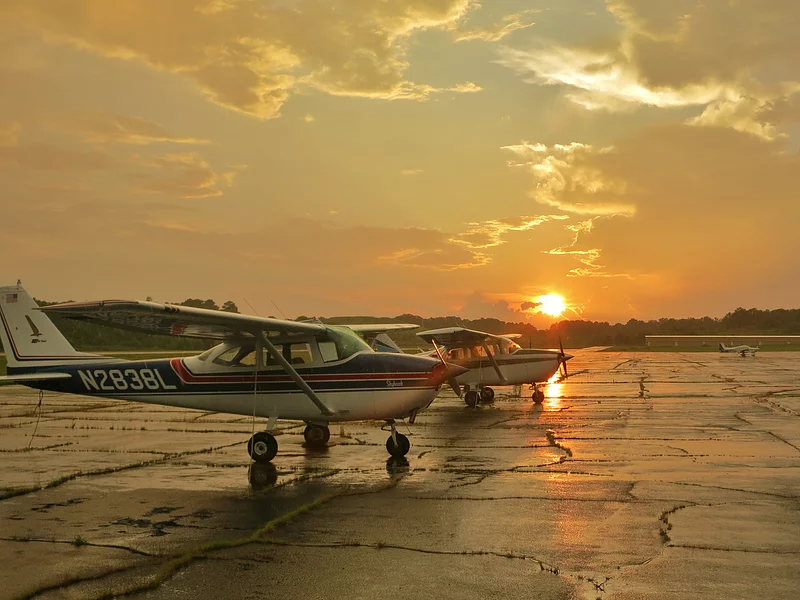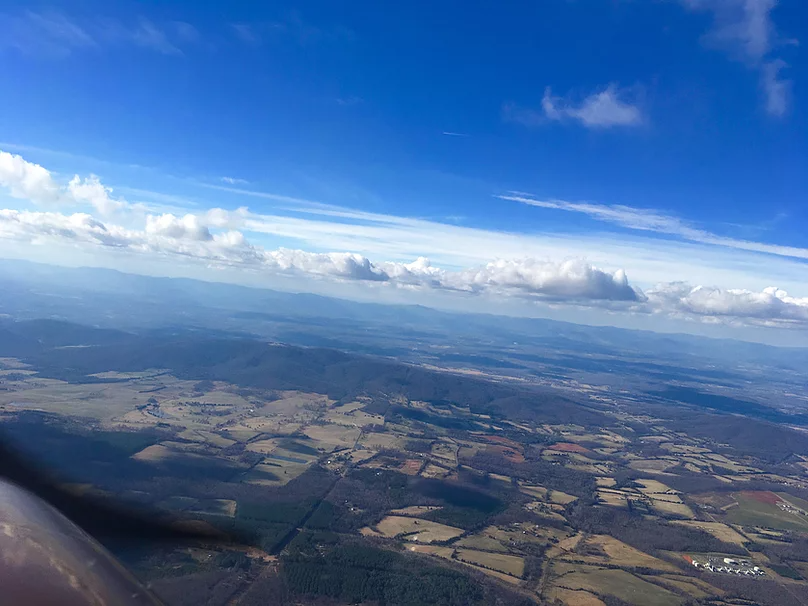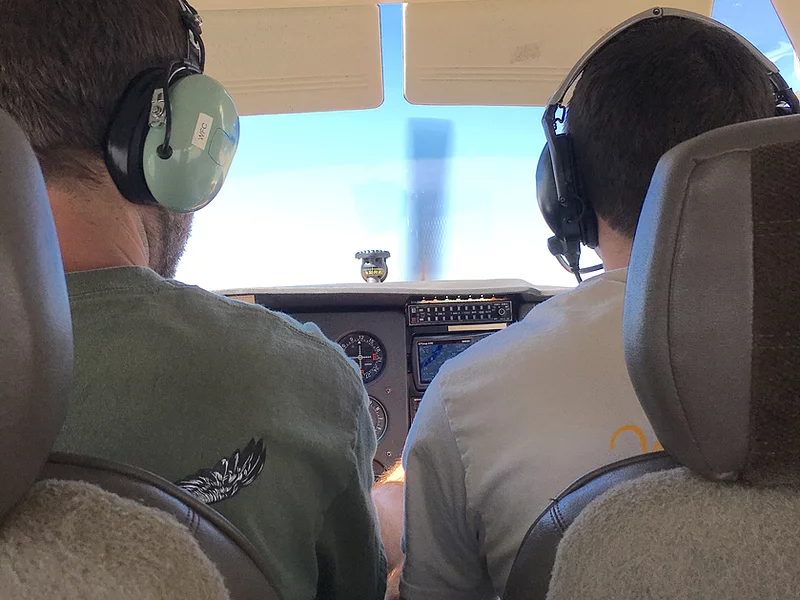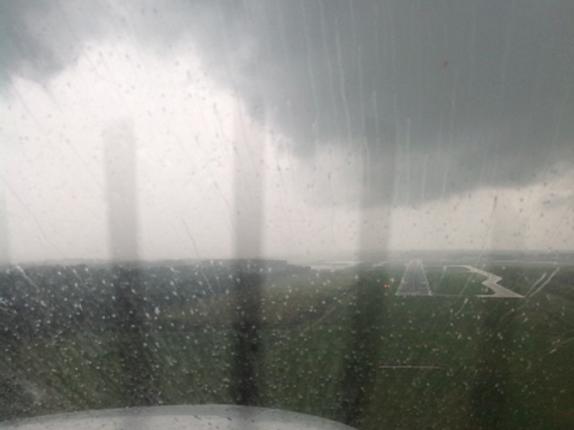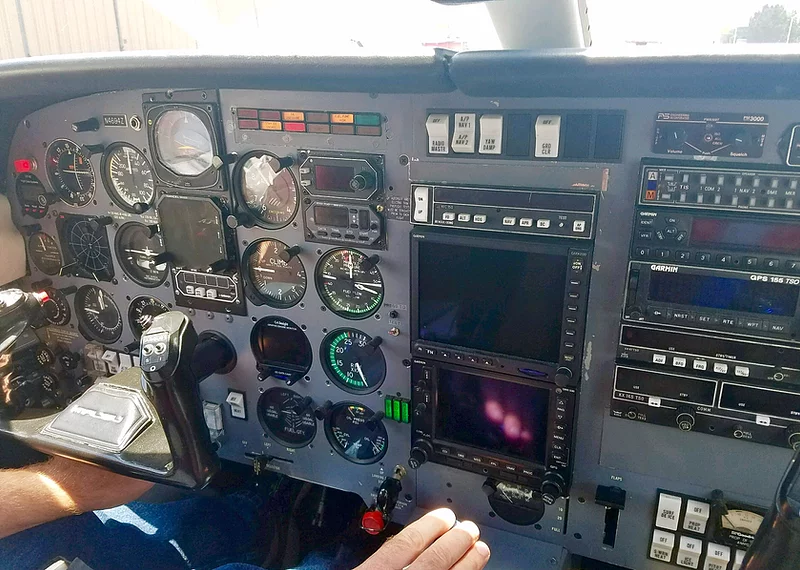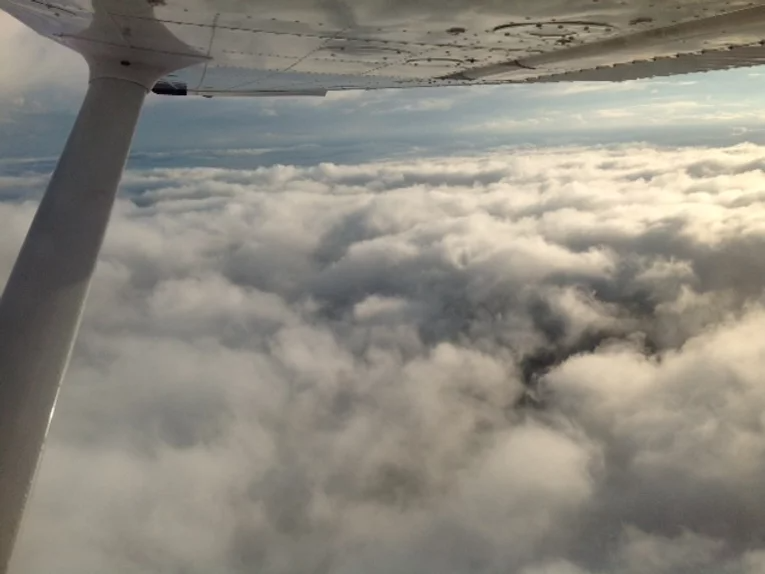Private Pilot Course | PPL
The Freedom of a Private Pilot’s License
One of the benefits of holding a private pilot’s license is that you can save time traveling from place to place. A distance that would be about a five hour drive can be spanned in an hour or two in flight. Most people enjoy the overwhelming sense of freedom experienced in flight. They love the bird’s eye view you get from a few thousand feet above the ground. You can avoid highway traffic jams and can go have lunch a hundred or two miles away and still be home in plenty of time for dinner. What appeals to so many is the ability to pick up and go, leaving behind the stress and noise of life on the ground. And with over 5,000 paved airports in the U.S. (over 14,000 total) there are countless options when you privately fly versus flying commercially
Who Can Take Lessons?
- You must be at least 16 years old to fly solo, and 17 years old to receive a private pilot’s license/certificate.
- You must be able to read, understand, and speak English.
- You must pass a physical examination called a Third Class Aviation Medical Exam. This checkup is given by an FAA-authorized Aviation Medical Examiner (AME) to determine primarily if you have any mental or neurological problems or a serious medical condition like chronic heart disease. The cost for this exam is around $100 and is good for 5 years for those under 40 years of age, 2 years if older than 40.
Check out some of the requirements below to get an idea of what is required. When you complete your own research give us a call and we can help point you in the right direction.
Private Pilot Requirements
- Age: 17+ years old
- Education Requirements: Able to read, write, and speak English fluently
- Flight Requirements: Minimum of 40 hours of flight training, which must include a minimum of:
20 hours of dual instruction including:
- 3 hours of cross-country to airports more than 50 miles away
- 3 hours of simulated instrument time
- 3 hours of night including a 100 nautical mile round trip and 10 night takeoffs and landings
- 3 hours of instruction within 60 days prior to your practical test
10 hours of solo flight including:
- 5 hours of cross-country including a 150 nautical mile round trip
- 3 takeoffs and landings to a full stop at an airport with a control tower
Examinations:
- Private pilot knowledge test with a score of 70% or better. There are 60 multiple choice questions.
- Practical flight test with an FAA-designated examiner. Nationwide, the pass rate is about 90% for students on their first try!
Instrument Rating | IFR
So you’ve had to cancel too many trips because of less than VFR conditions. The weather wasn’t absolutely terrible, but it was just bad enough to make it a questionable VFR flight. We have all been there. Don’t let the clouds dictate your schedule any longer. Fly on YOUR schedule with an instrument ticket.
Nothing can beat the feeling of freely punching through the clouds on an IFR flight. The confidence and skill you will acquire during instrument training will provide you with the opportunity to untie the airplane when everyone else is parking for the day. Make this the last time you have to call and cancel because of the clouds, and start your instrument training today.
Who can apply for an Instrument Rating?
To be eligible for an Instrument Rating, there are some basic requirements you must meet.
Instrument Rating Requirements:
- You must have at least a Private Pilot Certificate.
- You must be able to read, understand, and speak English
- Hold at least a 3rd Class medical
Flight Time Requirements:
To earn your Instrument Rating, there are some flight time requirements you must fulfill. You will need at least 50 hours of cross-country time while acting as pilot in command and 40 hours of instrument time. The 40 hours can be actual or simulated and must include the following:
- 15 hours of instrument training from an authorized instructor
- 3 hours of flight training in preparation for the practical test.
- 1 cross country flight flown under IFR with a minimum distance of 250 NM.
- You must execute 3 different types of approaches, and an approach must be flown at each airport.
Ground Instruction:
This is a required program of classroom study which includes topics such as ATC system and procedures, IFR navigation, use of IFR en route and instrument approach charts, real-world application of weather theory, FAA regulations, and Crew resource management.
The Written Knowledge Test
This two and a half hour test consists of 60 random multiple-choice questions taken from a pool of roughly 700 questions. Acquired knowledge for this test is obtained via the ground instruction school and can be supplemented by home study with DVDs or books.
Biannual Flight Review | BFR
The flight review is required by Federal Aviation Regulations for all pilots who intend to act as pilot in command of an aircraft. It is a cooperative endeavor to provide the pilot with a periodic assessment of his or her flying skills and to determine if there has been any deterioration in areas that may adversely affect flight safety. The review should be a proficiency evaluation accomplished in an economical and expeditious manner while providing a learning experience, rather than the pressure of a checkride atmosphere.
The goal of the review should be established in a discussion between the pilot and flight instructor prior to beginning the review. This can be done by discussing the flight review’s basic content, including the elements to be covered in both the oral and flight portions. These elements should be understood by the pilot and the flight instructor prior to initiating any phase of the review.
Refresher Flight
Sometimes the bare minimum to stay legal is not enough to maintain proficiency. Need work on crosswind landings? How about night proficiency or emergency operations? Maybe operation into a more demanding airspace? These are just a few reasons why someone might want to take a refresher flight or get recurrent training with a skilled CFI.
Instrument Proficiency Check | IPC
In order to act as PIC under IFR (whether in instrument meteorological conditions or not), the FAA requires six instrument approaches, intercepting/tracking courses, and holding within the previous six months. An instrument proficiency check within the previous six months will also suffice. For specifics, see FAR 61.57(c).
Pilots are sometimes confused about when they’re required to have an instrument proficiency check (IPC). Here’s the scoop: If it’s been more than six calendar months since you were last instrument current, you have to complete an IPC to become current.
The FAA now requires that pilots demonstrate specific tasks from the instrument rating Practical Test Standards (PTS) during an IPC. Instrument flying is a “use it or lose it” skill. Individual needs vary, but we suggest in addition to FAA currency requirements, you have:
- At least one hour of simulated or actual instrument time in the previous month;
- At least one instrument approach in the same period; and
- An IPC in the previous six months.

